|
 Secure Site
Secure Site
|
 |
Archive for the 'Now & Zen Alarm Clocks' Category
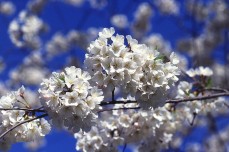 Cherry blossoms (sakura), often simply called blossoms (hana) are a common spring kigo. Kigo is a word or phrase associated with a particular season, used in Japanese poetry.
The association of kigo with a particular season may be obvious, though sometimes it is more subtle. Pumkins (kabocha), for example, are a winter squash that is associated with the autumn harvest.
It may be less obvious why the moon (tsuki) is an autumn kigo, since it is visible year round. In autumn the days become shorter and the nights longer, yet they are still warm enough to stay outside, so one is more likely to notice the moon. Often the night sky will be free of clouds so that also helps with noticing the moon. Autumn is also the time when the full moon can help farmers work under the moonlight to harvest their crops.
adapted from wikipedia.org
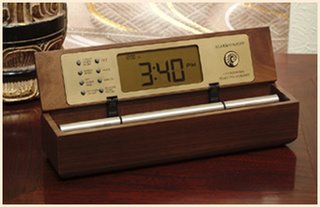 Digital Zen Alarm Clock, a meditation timer and progressive alarm clock
Now & Zen
1638 Pearl Street
Boulder, CO 80302
Posted in Cherry Blossoms, mindfulness practice, Natural Awakening, Now & Zen Alarm Clocks, Zen Timers
 Kamedo Tenjin Shrine: drum bridge in the garden, Hiroshige ukiyo-e During the Asuka period (538-710), gardens were supposed to express Buddhism and Taoism through replicating the mountainous regions in China.
During the Heian period (794-1185), gardens shifted from solely representing religious beliefs to becoming, “a place for ceremonies, amusement, and contemplation” (Miller).
 peter in a japanese garden In the Kamakura and Muromachi periods (1185-1573), a great many gardens were created during these two time periods due to improved garden techniques and the development of Syoinzukuri style. Zen beliefs were also flourishing at this time and had great influences over garden techniques and purposes. Another factor that allowed gardens to flourish stems from the fact that the shoguns simply enjoyed gardens.
After the Muromachi Period, Japanese tea ceremonies became an intricate part of Japanese culture. Sen no Rikyu (1517-1591) created the traditional style of a tea house where there was usually a roji (“dewy path”) leading to the house. Besides the tea houses, gardens constructed in the Edo period (1603-1868) reflected the tastes and style of each individual shogun ruler. Instead of being a religious symbol, gardens shifted to being a symbol of a shogun’s prestige and power (Miller).
adapted from wikipedia.org
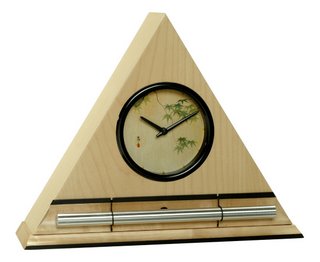 Zen Clocks by Now & Zen Now & Zen
1638 Pearl Street
Boulder, CO 80302
Posted in Japanese Inspired Zen Clocks, Now & Zen Alarm Clocks, Progressive Awakening, Zen Gardens, Zen Timers
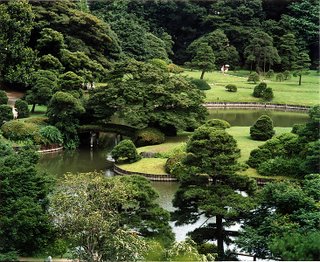 A kaiyu-shiki or strolling garden Chaniwa Gardens are built for holding tea ceremonies. There is usually a tea house where the ceremonies occur, and the styles of both the hut and garden are based on the simple concepts of the sado.
Usually, there are stepping stones leading to the tea house, stone lanterns, and stone basins (tsukubai) where guests purify themselves before a ceremony.
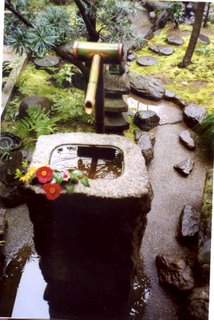 tsukubai Japanese gardens might also fall into one of these styles:
- Kanshoh-style gardens which are viewed from a residence.
- Pond gardens, for viewing from a boat.
- Strolling gardens (kaiyū-shiki), for viewing a sequence of effects from a path which circumnavigates the garden.
adapted from wikipedia.org
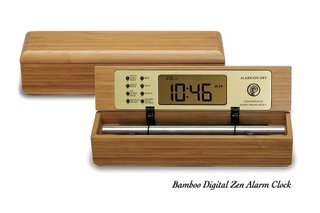 Bamboo yoga and meditation timer
Now & Zen
1638 Pearl Street
Boulder, CO 80302
(800) 779-6383
Posted in Bamboo Chime Clocks, Japanese Inspired Zen Clocks, mindfulness practice, Natural Awakening, Now & Zen Alarm Clocks, Zen Timepiece by Now & Zen, Zen Timers
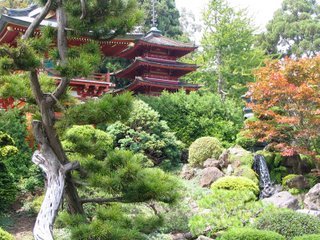 Hagiwara Japanese Tea Garden in San Francisco, California, showing the use of stone, water and plants Tsukiyama Gardens often copy famous landscapes from China or Japan, and they commonly strive to make a smaller garden appear more spacious.
This is accomplished by utilizing shrubs to block views of surrounding buildings, and the garden’s structure usually tries to make onlookers focus on nearby mountains in the distance. By doing this, it seems that the garden has the mountains as part of its grounds. Ponds, streams, hills, stones, trees, flowers, bridges, and paths are also used frequently in this style.
adapted from wikipedia.org
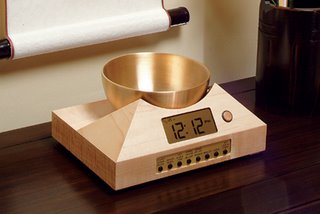 Zen Timer for meditation by Now & Zen Inc.
Now & Zen
1638 Pearl Street
Boulder, CO 80302
(800) 779-6383
Posted in Beauty, Natural Awakening, Now & Zen Alarm Clocks, Progressive Awakening, Zen Gardens, Zen Timepiece by Now & Zen, Zen Timers
 calm the mind, zen timers by Now & Zen, Boulder, CO In Medtitation everyone most likely experiences two of the five hindrances. They are boredom, which is half-hearted action with little or no collectedness and restlessness-worry, which is the inability to calm the mind.
The first three enlightment factors (mindfulness, investigation, energy) are to be used when experiencing boredom to regain collection, the last three enlightment factors (tranquillity, collection, equanimity) are to be used when experiencing restlessness and worry to regain collectedness.
adapted from wikipedia.org
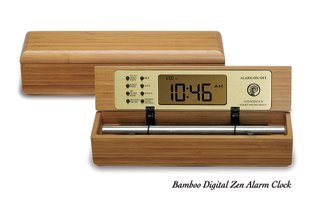 Bamboo Zen Timers, a meditation tool Now & Zen
1638 Pearl Street
Boulder, CO 80302
(800) 779-6383
Posted in Bamboo Chime Clocks, Chime Alarm Clocks, Japanese Inspired Zen Clocks, Meditation Timers, Meditation Tools, mindfulness practice, Natural Awakening, Now & Zen Alarm Clocks, Yoga Timer, Yoga Timers by Now & Zen
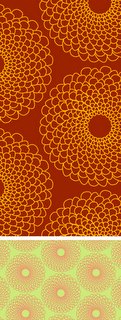 Chrysanthemum Flower The Imperial Seal of Japan is a crest used by members of the Japanese Imperial family. The Emperor of Japan, used a 16 petal chrysanthemum with sixteen tips of another row of petals showing behind the first row.
Shinto shrines either displayed the imperial seal or incorporated elements of the seal into their own emblems.
Shinto is the natural spirituality of Japan and the Japanese people. The word Shinto (“Way of the Gods”) was adopted from the written Chinese combining two kanji: “shin” meaning gods or spirits (originally from the Chinese word shen); and “tō“, or “do” meaning a philosophical path or study (originally from the Chinese word tao).
Modern Shinto does have a central theological authority but no singular Theocracy.
 Zen Timepiece, a bowl/gong alarm clock and timer in cherry finish adapted from wikipedia.org
Now & Zen Headquarter Store
1638 Pearl Street
Boulder, CO 80302
Posted in Chime Alarm Clocks, Meditation Timers, Meditation Tools, Now & Zen Alarm Clocks
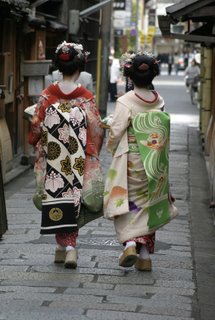 chrysanthemums on obi
Chrysanthemums, often called mums or chrysanths, are a genus (Chrysanthemum) of about 30 species of perennial flowering plants in the family Asteraceae, native to Asia and northeastern Europe.
The flower was introduced into Japan probably in the 8th century AD, and the Emperor adopted the flower as his official seal. There is a “Festival of Happiness” in Japan that celebrates the flower.
adapted from wikipedia.org
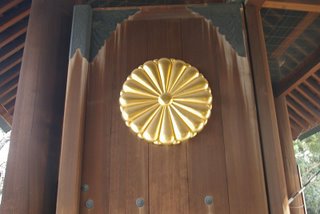 Chrysanthemum Crest - The gate of Yasukuni shrine
Now & Zen
1638 Pearl St.
Boulder, CO 80302
Posted in Japanese Inspired Zen Clocks, mindfulness practice, Now & Zen Alarm Clocks
 Maneki Neko on Peter's kimono at Ten Thousand Waves Spa, Santa Fe, NM The Maneki Neko (“Beckoning Cat”; also known as Welcoming Cat, Lucky Cat, Money Cat, or Fortune Cat) is a common Japanese sculpture, often made of ceramic, which is believed to bring good luck to the owner. The sculpture depicts a cat (traditionally a Japanese Bobtail) beckoning with an upright paw, and is usually displayed—many times at the entrance—in shops, restaurants, and other businesses. Some of the sculptures are electric or battery-powered and have a slow-moving paw beckoning. I n the design of the sculptures, a raised right paw supposedly attracts money, while a raised left paw attracts customers.
To Westerners it may seem as if the Maneki Neko is waving rather than beckoning. This is due to the difference in gestures and body language recognized by Westerners and the Japanese, with Japanese beckoning by holding up the hand, palm out, and repeatedly folding the fingers down and back up, thus the cat’s appearance.
While it is believed that Maneki Neko first appeared during the later part of the Edo period (1603-1867) in Japan the earliest documentary evidence comes from the 1870s, during Japan’s Meiji Era. It is mentioned in a newspaper article in 1876 and there is evidence kimono-clad Maneki Neko were distributed at a shrine in Osaka during this time.
 Black Lacquer Zen Alarm Clock adapted from wikipedia.org
Now & Zen
1638 Pearl Street
Boulder, CO 80302
Posted in Chime Alarm Clocks, Japanese Inspired Zen Clocks, Now & Zen Alarm Clocks, Progressive Awakening, Zen Timers
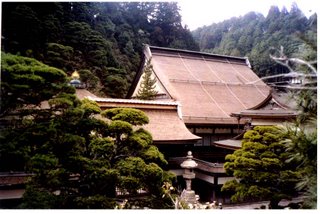 Koya-san, Japan Mount Kōya (Kōya-san) is the name of mountains in Wakayama prefecture to the south of Osaka. There is no one mountain officially called Kōya-san in Japan.
First settled in 819 by the monk Kukai, Mt. Koya is primarily known as the world headquarters of the Koyasan Shingon sect of Japanese Buddhism. Located in an 800 m high valley amid the eight peaks of the mountain (which was the reason this location was selected, in that the terrain is supposed to resemble a lotus plant), the original monastery has grown into the town of Koya, featuring a university dedicated to religious studies and 120 temples, many of which offer lodging to pilgrims.
adapted from wikipedia.org
 Digital Zen Alarm Clock Now & Zen
1638 Pearl St.
Boulder, CO
Posted in Chime Alarm Clocks, Japanese Inspired Zen Clocks, Meditation Timers, Meditation Tools, Now & Zen Alarm Clocks, Zen Gardens, zen monks, Zen Timers
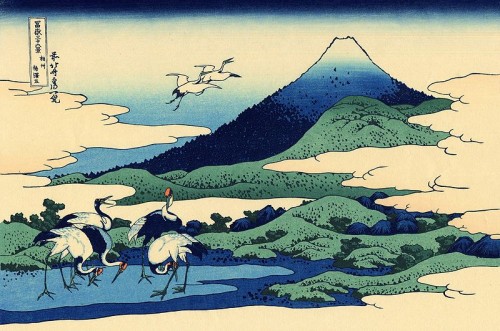 Hokusai Ukiyo-e Print, Umegawa in Sagami Province Mount Fuji (Fuji-san) is the highest mountain in Japan at 12,388 ft. Along with Mount Tate and Mount Haku, it is one of Japan’s “Three Holy Mountains”. An active volcano that last erupted in 1707–08, Mount Fuji is just west of Tokyo, and can be seen on a clear day. Mount Fuji’s exceptionally symmetrical cone is a well-known symbol of Japan and it is frequently depicted in art and photographs, as well as visited by sightseers and climbers.
While Hokusai’s Thirty-six Views of Mount Fuji is the most famous ukiyo-e series to focus on Mount Fuji, there are several other series with the same subject, including Hiroshige’s Thirty-six Views of Mount Fuji and Hokusai’s own later series One Hundred Views of Mount Fuji.
adapted from wikipedia.org
 Zen Clocks by Now & Zen
Now & Zen
1638 Pearl Street
Boulder, CO 80302
(800) 779-6383
Posted in Chime Alarm Clocks, Meditation Timers, Meditation Tools, Now & Zen Alarm Clocks, Zen Timers
« Previous Page — « Previous Entries
Next Entries » — Next Page »
|
|
|
|